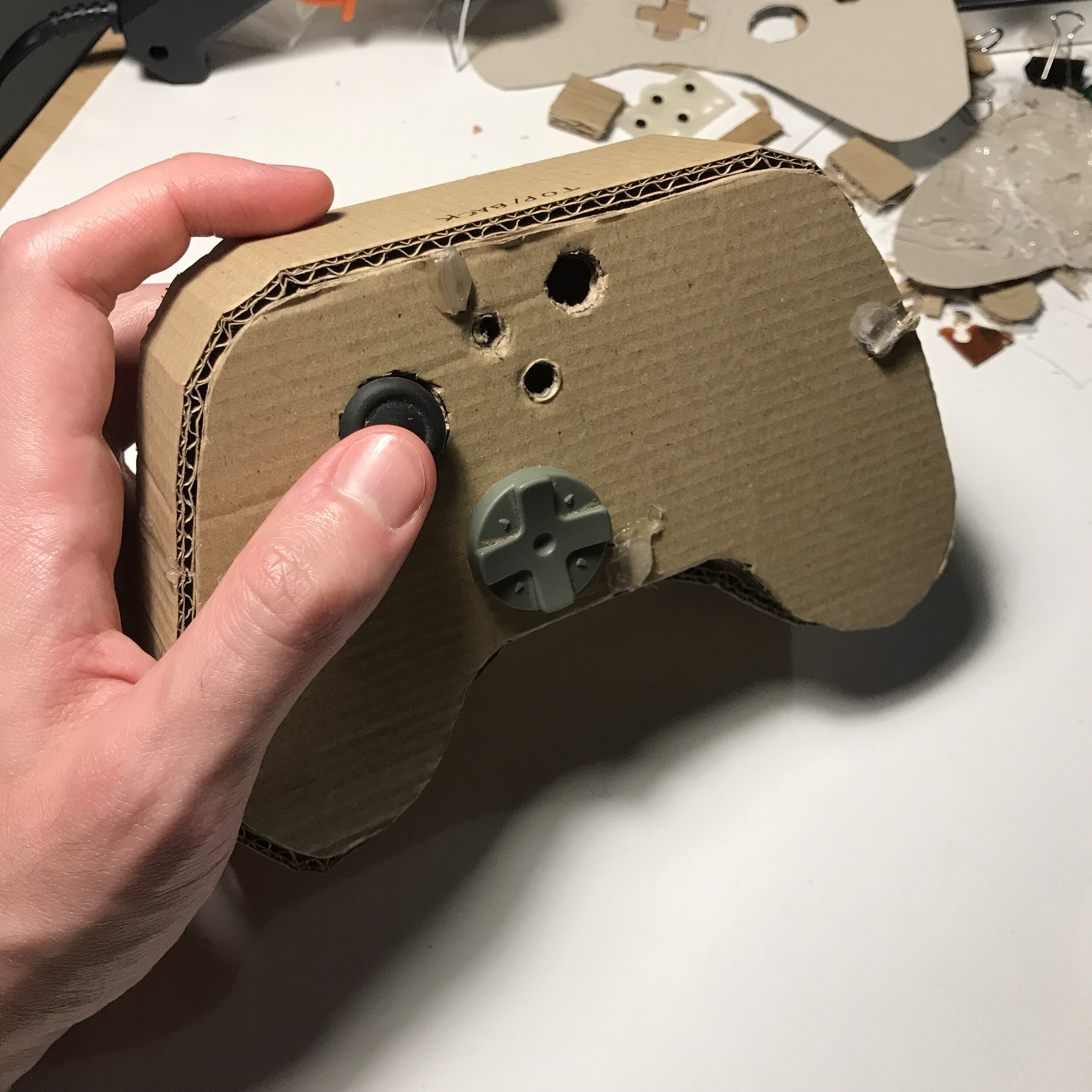The final project for my masters programme was about improving video game controllers. Specifically, I looked at introducing modularity so that users would be able to modify an existing controller to accommodate their disabilities. Rather than a single product to address a wide range of ability levels, the need exists for a more bespoke solution. My solution has two primary components:
a custom shell, which allows for different control layouts
attaching input components to the inside of the faceplates instead of a soldered connection, which would allow users to swap components around (for example, moving a set of buttons to the rear)
This allows for users to use a regular controller, and only purchase (or 3D print) a faceplate that fits their need, while re-using the internal components. No need to purchase an entirely separate device just to access standard inputs.
The design process journal that served as part of my final submission in August 2020 may be viewed here.
Though I have graduated from the programme, I am still updating this project and will continue to post updates to this page as I progress. It’s not a perfect product, but I would like to address as many faults and make it the strongest idea I can.
Video Prototype
This is a video prototype demonstrating how the final product would function. Although it wasn’t necessary for my final submission, I really enjoy making these kinds of videos as they can efficiently demonstrate the environment and user the final product is intended for.





















